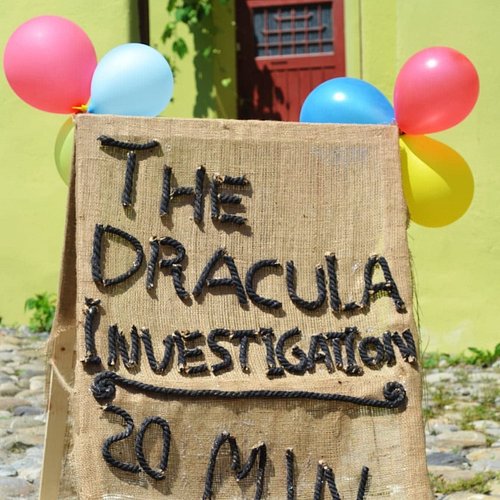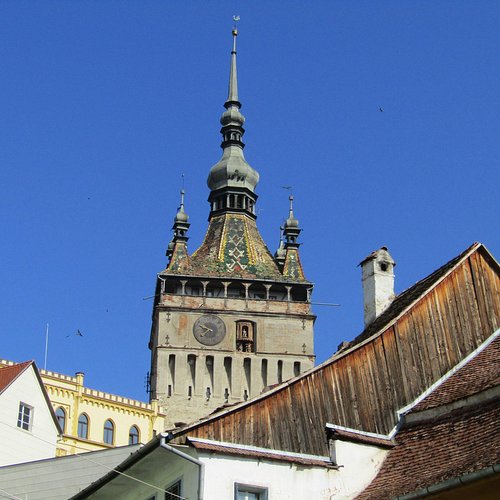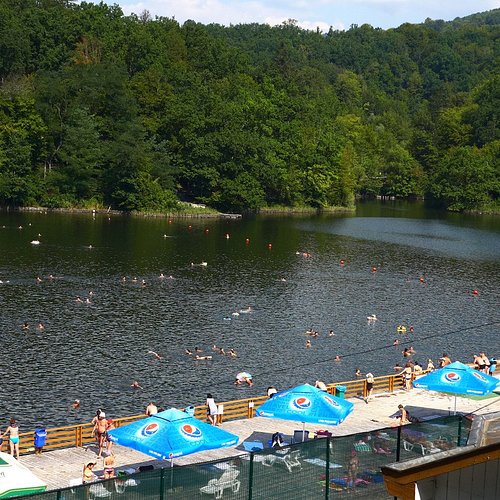What to do and see in Mures County, Transylvania: The Best Things to do
Discover the best top things to do in Mures County, Romania including Petry Museum and Workshop, The Dracula Investigation, Sighisoara Clock Tower, Palace of Culture, La Gradina Zoo, Sighisoara Historic Center, Bear Lake, Synagogue of Tg. Mures, Complexul de Agrement, Targu Mures Fortress.
Restaurants in Mures County
1. Petry Museum and Workshop
Overall Ratings
5.0 based on 17 reviews
2. The Dracula Investigation
Overall Ratings
5.0 based on 203 reviews
Who hasn’t heard of the (in)famous Dracula? Vampire or ruler, known near and far for his cruelty. Here, at The Dracula Investigation, you will learn that this story also starts with a simple human being like you and me. A person with feelings, a traumatized kid - allow us to present you the real Vlad Dracula - the son, brother, warrior. Inside, in 5 rooms Vlad himself will tell you his life story. You will get to see animations, sculptures and light/ shadow effects. We invite you to travel back in time with us to get to know Dracula’s human, real and often hidden part.
Reviewed By 350kingak
An original idea presenting the life of Vlad Țepeş (the Impaler) in an interactive way with videos, sculptures and audio, creating an adequate atmosphere for his life story.
3. Sighisoara Clock Tower
Overall Ratings
4.5 based on 909 reviews
Reviewed By mirunavrn - Bucharest, Romania
The Clock Tower is emblematic for the city. It is currently housing the History Museum of Sighisoara, where visitors can learn about the history of the city and see various well preserved objects and artifacts from different centuries. You can also go up and have an overview of the city.
4. Palace of Culture
Overall Ratings
4.5 based on 205 reviews
Reviewed By florentinadriang - Arad, Romania
The city leadership, at the beginning of the twentieth century, decided to build a new city center, and chose that the three buildings to be built be made in the Art Nouveau style. It was possible to build only two of them - the Cultural Palace and the City Hall (currently the Prefecture) and the Theater was not built. The architecture of the Palace of Culture is absolutely superb, made with great attention to every detail, and is in a perfect state of preservation. I did not have time to visit it inside, the cost of a ticket (approx. 3 Euro) being practically symbolic. If you have time, visit it during the day, to admire its architecture, but also at night, when the building is artistic iluminated
5. La Gradina Zoo
Overall Ratings
4.5 based on 174 reviews
Reviewed By silviav939 - Constanta, Romania
We spend half day here and we all enjoyed it very much; there are plenty of animals, clean place, spacious, there are places to eat sweets, pop corn etc. Congrats to all for taking care of such a big place!
6. Sighisoara Historic Center
Overall Ratings
4.5 based on 1,577 reviews
Reviewed By carolas936 - Marietta, United States
Sighisoara is an outstanding example of a small fortified city in the border region between the Latin-oriented central Europe and the Byzantine-Orthodox culture of south-eastern Europe. Castle walls enclose a steep plateau hill overlooking a bend in the Tirnava river (traces of occupation trace back to the Paleolithic period). Sighisoara was built in the 12th century by German craftsmen and merchants who were ordered by Hungarian rulers to colonize Transylvania to protect the Carpathian border against the Mongols. These Saxon settlers occupied City Hill; the town grew as a regional trading center, defensive outpost and transportation hub. Following the Mongolian invasion of 1241, the fortified settlement was reinforced with stone walls and guard towers surrounding the entire plateau. The town, known in 1280 as Castrum Sex, developed commercial activities thanks to the powerful guilds of craftsmen. Each guild was responsible for the construction of a tower and its defense. The town obtained the title ‘Civitas’ in 1367 and became an important trading and defensive center in Transylvania. Sighisoara heightened its walls between 1421 and 1526 in response to threatened Turkish invasions. During the 17th century, the population was reduced by almost half from two plague epidemics. Fires damaged the lower town in 1676, 1736 and 1788, floods in 1771, and an earthquake in 1838. Despite this, the area within the castle walls has rebuilt and kept its original medieval architecture, with narrow cobbled streets lined with rows of houses. Three main streets run roughly north-south, crossed by passages and alleyways. Houses are mostly two or three stories, the simple homes of craftsmen, built from stone or brick, covered in colored stucco, roofed with tiles, with a narrow facade along the street and an L- or U-shaped layout. Wandering the cobbled streets between medieval houses gave me a sense of what it would be like to live in a fortified castle. Sighisoara Historic Center was listed in 1999 as a UNESCO World Heritage Site. It is accessible at all times with no entry fee.
7. Bear Lake
Overall Ratings
4.5 based on 178 reviews
Reviewed By comanh - Bucharest, Romania
Is a great and beautifull place to see the nature and relax also to make some routes that you have there and to see the nature and exquisit lakes and filon of salt . The indicators are good and worth going even with children , for them to see the fish in the lakes and wild duck's . I highly recommend for anyone with a little bit of adventure in the bones :)) , worth the time you spend there seeing all lakes that are there on the routes .
8. Synagogue of Tg. Mures
Overall Ratings
4.5 based on 15 reviews
Reviewed By Mike_TLV - Tel Aviv, Israel
This uniquely ornate and very beautiful synagogue stands in a city where there is no longer a Jewish community. This is a must visit place to learn about the glorious and tragic history of the Jewish community of the city. The entrance is not in front of the Synagogue but through a gate to the right of the Synagogue gate. It's better to book a visit by phone (5 LEI entry donation). 4 min walk from Palace of Culture.
9. Complexul de Agrement
10. Targu Mures Fortress
Overall Ratings
4.0 based on 148 reviews
Reviewed By comanh - Bucharest, Romania
The citedell is beautifull and it has the history at every corner of the premises. The way you see how is build by generations makes you enter in history and pay atention of how the fortress has his purpose for the generations that lived ages ago . Worth every minute to be seen .










